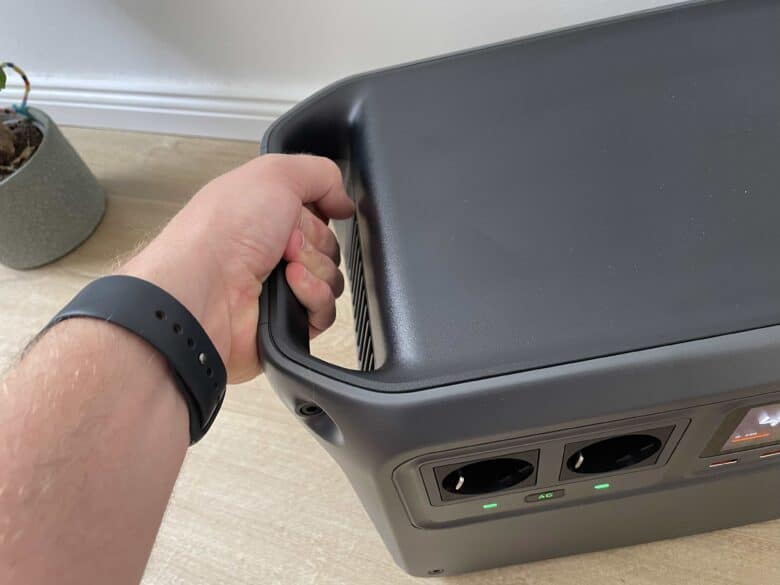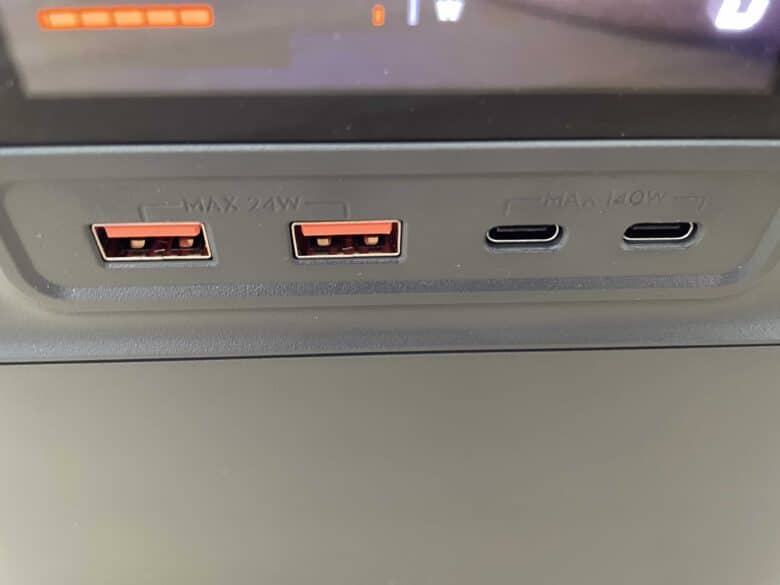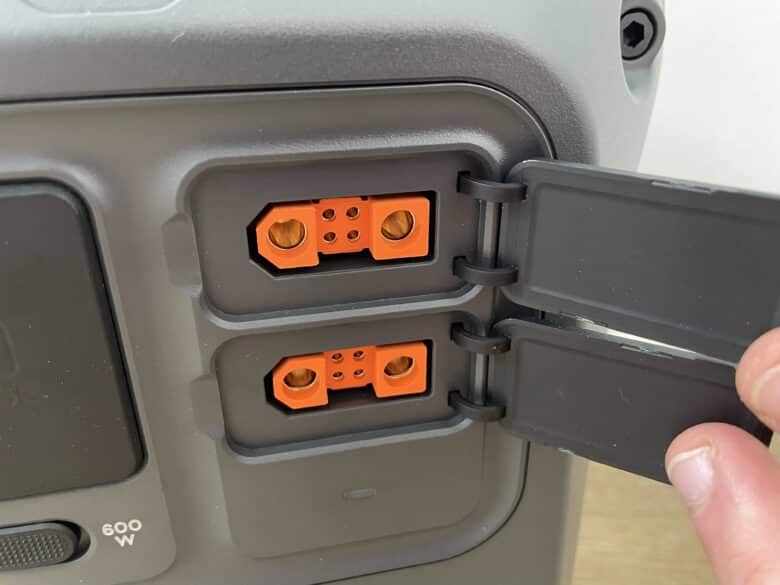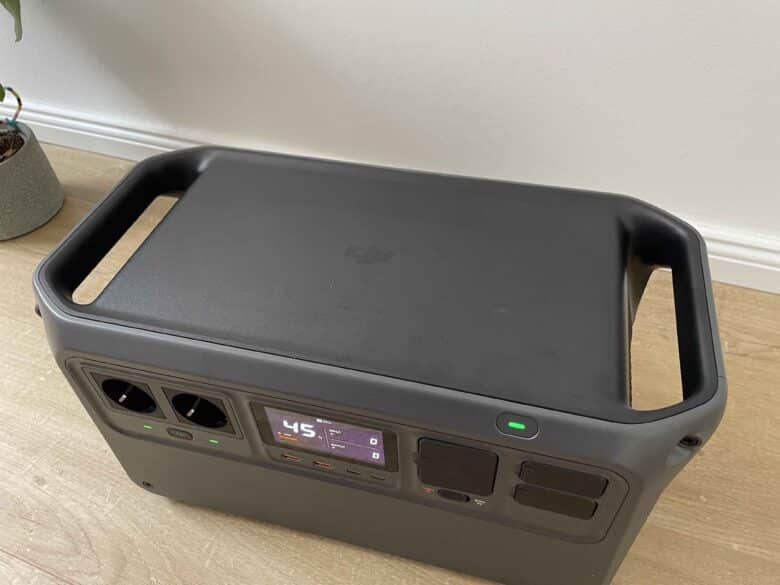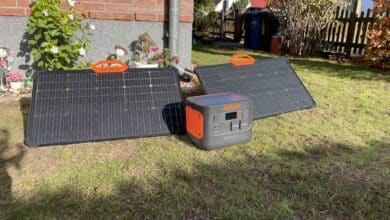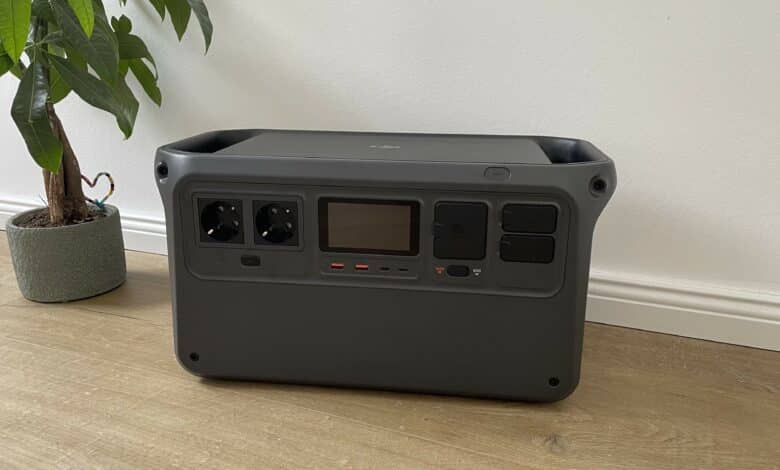
Drone fans will definitely be familiar with DJI. After all, the manufacturer primarily produces practical flying objects for private use. But now the company apparently also wants to conquer the power station market. In the DJI Power 1000 Review, we take a look at a model that not only wants to be the perfect complement to the matching DJI drone, but also wants to convince non-drone owners. Among other things, this is to be achieved with a total output of up to 2,400 watts. Will the plan work?
Technical data
| Dimensions | 448 × 225 × 230 mm |
| Weight | 13 kg |
| Connections | 2x AC output 2x USB-C 2x USB-A 1x SDC 1x SDC Lite 1x AC input |
| Battery capacity | 1.024 Wh |
| Battery technology | LiFePO4 |
| Battery life | After 4,000 charging cycles 70% maximum battery capacity |
| Price | € 999.00 * |
Scope of delivery
DJI Power 1000 Review: Design and workmanship
DJI is not reinventing the wheel when it comes to looks. This means that you get a classic design here that is also reminiscent of other power stations. The reason for this is not only the shape, but also the color scheme. The mix of gray tones reminds me, for example, of the EcoFlow Delta 2 (Review).
However, I wouldn’t accuse the mobile energy storage unit, which weighs around 13 kg, of lacking courage. If you are looking for an unusual look, you should take a look at the Litheli Eclair BS1000 (Review) instead. However, I definitely like what I see with the DJI. It starts with the practical carrying handles, which make transporting the power station much easier.
But I also really like the pleasantly bright display. It was easy to see in the test, even in strong sunlight. As is now standard, the display shows important parameters such as battery status and output and input power. In addition to the screen, there are also various connections on the front. We will explain exactly which ones later.
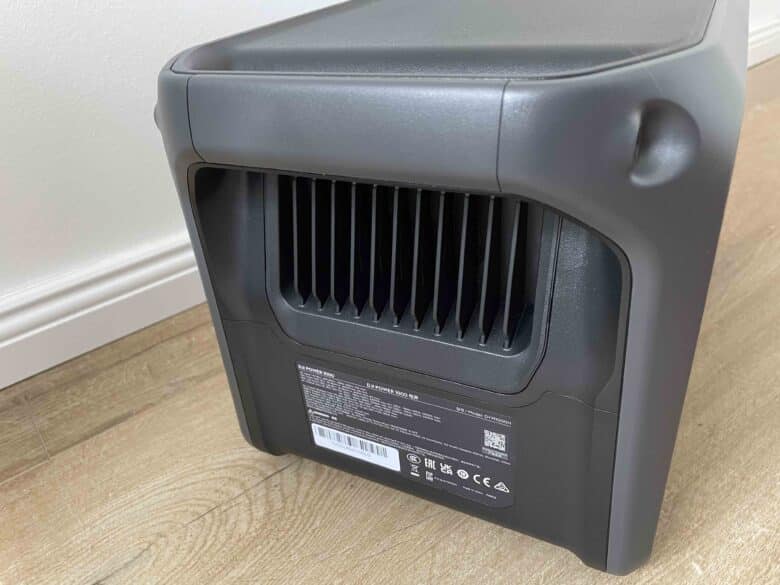
The ventilation slots on the side of the Power 1000 are designed to ensure the quietest possible operation. In terms of build quality, DJI really offers great things here. What bothers me, however, is the lack of protection against damaging ingress of water or dirt. For a drone power station that is primarily intended for outdoor use, this is to be expected.
DJI Power 1000 Review: Connections
There are various connections on the front of the Power 1000. In addition to 2x Schuko sockets (max. 2,400 watts), you will find 2x USB-A (24 watts each) and 2x USB-C (140 watts each). This is no more than a good standard, but certainly sufficient for the masses. What I personally would have liked would have been a wireless charging surface on the top, of which an Allpowers R1500 (Review) offers two. The flat lid would have been ideal for this.

But DJI has another treat in store that is specifically aimed at drone owners. The company has dispensed with things like a car port and instead relies on an SDC connection. You can charge your drone via this connection developed by DJI itself, which has a power output of up to 230 watts.
However, the SDC port not only allows you to charge your DJI flying object. Conversely, it can also be used to supply the battery of the mobile energy storage unit with new power. However, if you want to connect another device via the SDC port, you will need a suitable adapter.
Strictly speaking, SDC is a universal connection for which DJI sells various adapters. For example, you can also connect a solar panel here. However, the adapters are quite expensive to buy. For this reason, the DJI Power 1000 is really only suitable for owners of other products from the manufacturer. Everyone else is probably better off with the standard connections of the competition.
DJI Power 1000 Review: Inputs
Sooner or later, the Powerstation’s battery will run out. Then it needs to be supplied with new energy. The DJI Power 1000 offers you various options for this. The quickest way is via a standard household socket. With its help, a maximum input power of 1,200 watts is possible.
Accordingly, it takes just over an hour to fully charge the battery. To save the battery, you can also reduce the power to 600 watts. This may take a little longer, but the procedure is not as strenuous for the battery cells. To switch between the two charging modes, simply use the switch located directly at the AC input.
You can also use the universal SDC port for charging if you have a suitable adapter available. For example, you can connect a solar panel or your car to provide new energy. The two DJI-exclusive connections can provide a maximum of 800 watts combined.
DJI Power 1000 Review: performance
Of course, the performance of a power station is the most important factor when it comes to practical experience. With a maximum total output of 2,400 watts, the DJI Power 1000 is well positioned. From charging a smartphone to operating an angle grinder, everything is possible here. I didn’t just connect these two gadgets in the test.
I also tested other power-hungry electrical appliances such as a hairdryer, kettle and toaster. Safety is not neglected either. After all, the model has overload protection, which is activated if the output power is too high. If the maximum possible power is exceeded, the power station switches off automatically.

However, given the battery capacity of just under 1,000 Wh, the Power 1000 is not all that long-lasting. You should definitely keep this in mind if you want to operate devices that require a lot of power for a longer period of time. All in all, DJI delivers a positive picture here, with only the somewhat low battery capacity being a problem.
DJI Power 1000 Review: UPS and LiFePO4 battery
The DJI Power 1000 can be categorized in the middle class of power stations in terms of price. However, this in no way means that you are offered weak equipment. Instead, the manufacturer relies on modern features that are also used in higher-priced models. Firstly, there is the battery technology. DJI relies on LiFePO4 battery cells.

Compared to the now outdated lithium-ion technology, these have several advantages. Firstly, there is the added safety. The risk of fire and explosion is significantly lower for power stations with LiFePO4 batteries. Secondly, experience has shown that the batteries have a longer service life. The Power 1000 should be able to withstand over 3,000 charging cycles until the battery has a maximum capacity of “only” 80%.

DJI has also equipped its Powerstation with the practical “uninterruptible power supply” (UPS) function. With the help of UPS, you can use the mobile energy storage unit as a kind of miniature emergency power supply. To do this, connect the Power 1000 to a power socket and connect one or more consumers to the Powerstation. In the event of a power failure, the DJI then steps in as a power supplier within milliseconds.
Conclusion
DJI can only build drones? With the Power 1000, the manufacturer makes it clear that it also knows its way around other fields. The Powerstation premiere not only scores points with its stylish design and great build quality. On top of this, the combination of practical handles and the not excessive weight of 13 kg ensures that it can also be carried comfortably over short distances. There is nothing to complain about in terms of performance either.
Normal consumers don’t need more than 2,400 watts of maximum total power anyway. However, the Power 1000 is more of a sprinter than a marathon runner. At 1,000 Wh, the battery size is quite limited. I also found the choice of connections to be somewhat limited. As a non-drone owner, I would have liked the new SDC port to complement rather than replace common connections such as a car port and solar connection.
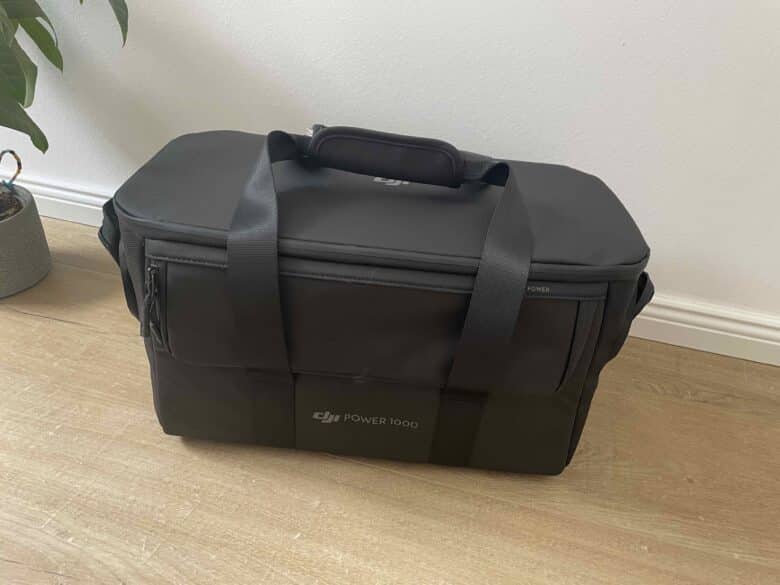
But of course there’s a good side to all this. After all, with the SDC port as a universal connection, you are quite flexible. DJI drone owners in particular will love the port. After all, it offers fast charging for the compact high-flyers. Accordingly, I see the DJI Power 1000 as the ideal power station for all drone pilots and those who want to become one. For everyone else, it is nothing more than a solid power station.
DJI Power 1000
Design and workmanship
Hardware
Equipment
Value for money
89/100
The DJI Power 1000 is a solid power station and the perfect mobile refueling station for your DJI drone.


